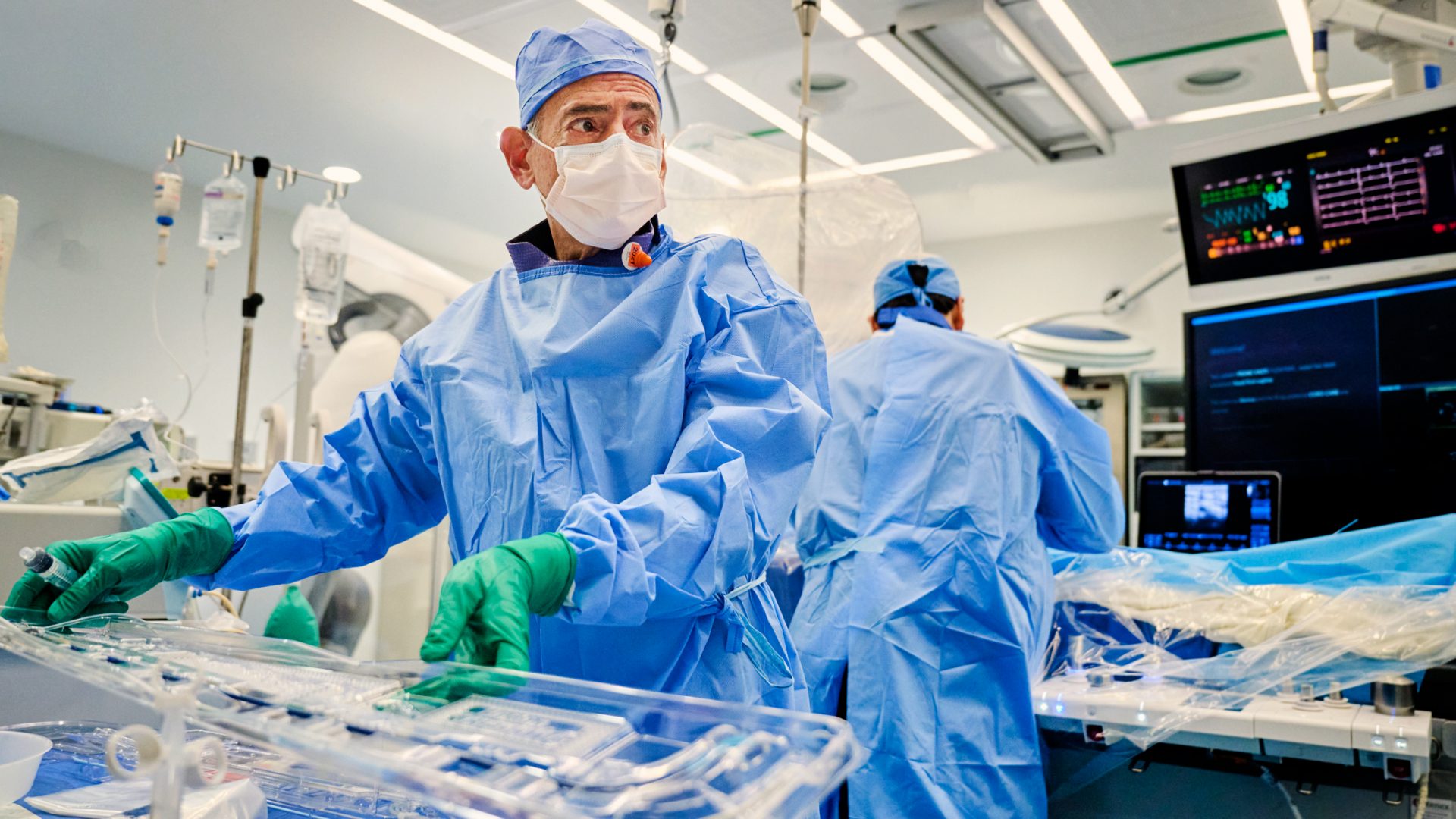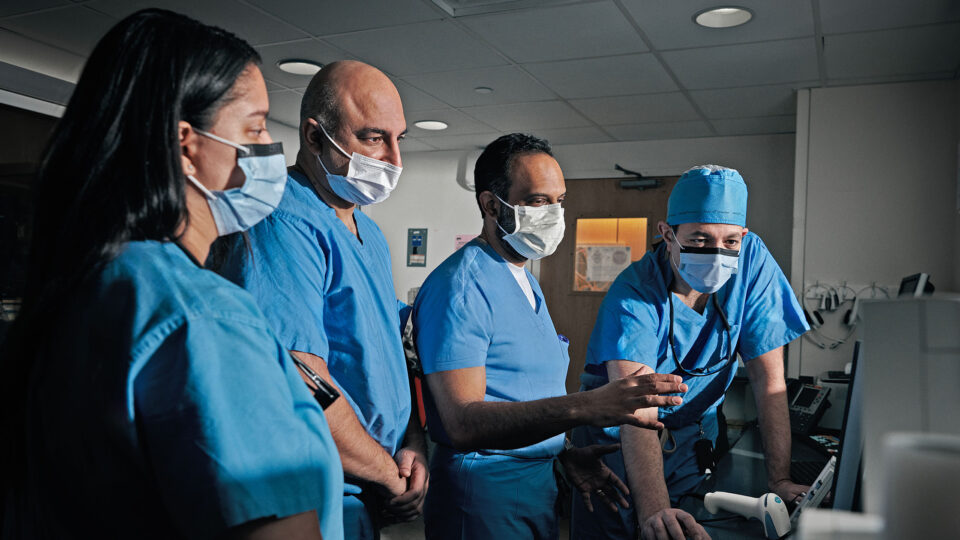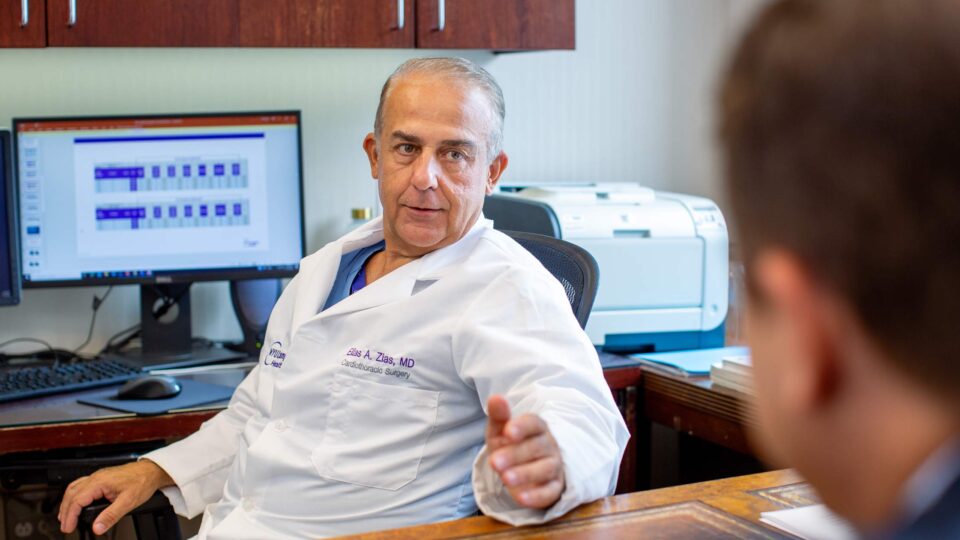Leadless pacemakers are a novel technology designed to overcome the complications and adverse effects associated with conventional transvenous pacemakers. The devices have been shown to be safe, with a low risk of both short- and long-term complications and high rates of successful implantation.
“Leadless pacing is the future of pacemaker technology with the potential to transform the lives of patients with bradyarrhythmias,” says Larry A. Chinitz, MD, director of NYU Langone’s Heart Rhythm Center.
A national leader in the treatment of arrhythmias with the new technology, Dr. Chinitz helped lead the MARVEL 2 study that evaluated the performance of a leadless ventricular pacemaker with automated, enhanced accelerometer-based algorithms that provide atrioventricular (AV) synchronous pacing.
Research suggests that patients with pacemakers that maintain AV synchrony appear to have less morbidity and mortality than patients with ventricular stimulation alone. Additional benefits to AV synchrony include avoidance of pacemaker syndrome, improvement of quality of life, and improvement in left ventricle stroke volume and function.
Decades of Progress
For several decades, cardiac pacing has been exclusively performed by systems consisting of subcutaneously implanted pulse generators with one or more transvenous leads. A major limitation of traditional pacing systems is the potential for complications attributable to the pacemaker pocket or leads, including hematoma, pneumothorax, hemothorax, lead dislodgement, lead failure, or infection.
While early versions of leadless pacemakers were unable to provide AV synchrony, modern leadless devices are designed to overcome pocket- and lead-related complications, with reports of an approximate 60 percent reduction in complications compared with transvenous pacemakers.
“Encouraging results from preliminary studies have led to an increased interest in a broader use of leadless devices,” Dr. Chinitz explains. “Despite recent progress, currently available leadless pacemakers only provide single-chamber ventricular rate responsive pacing.”
Moving Toward AV Synchrony
In collaboration with Medtronic, Dr. Chinitz and his team led the MARVEL 2 study, results from which showed that accelerometer-based atrial sensing with an automated, enhanced algorithm significantly improved AV synchrony in patients with sinus rhythm and AV block who were implanted with a leadless ventricular pacemaker.
Building on earlier observations, these encouraging results from MARVEL 2 confirmed an increase in AV synchrony and stroke volume with AV synchronous pacing. In addition, the performance of the algorithm did not appear to have diminished efficacy in newer implantations versus long-term implantations.
“The enhanced MARVEL 2 algorithm allowed for AV synchronous ventricular pacing with a leadless pacemaker in patients with normal sinus activity and complete heart block,” Dr. Chinitz notes.
Translational Outlook
If the early results from the MARVEL 2 trial hold up, Dr. Chinitz anticipates the Heart Rhythm Center will be among the first to adopt leadless pacing technology. NYU Langone is one of the world’s largest centers for the treatment of complex arrhythmias and a pioneer in pacemaker technology.
“If implemented in clinical practice, this new technology will help to further expand the spectrum of patients who might be eligible for leadless pacing.”
Larry A. Chinitz, MD
“If implemented in clinical practice, this new technology will help to further expand the spectrum of patients who might be eligible for leadless pacing,” Dr. Chinitz says.






